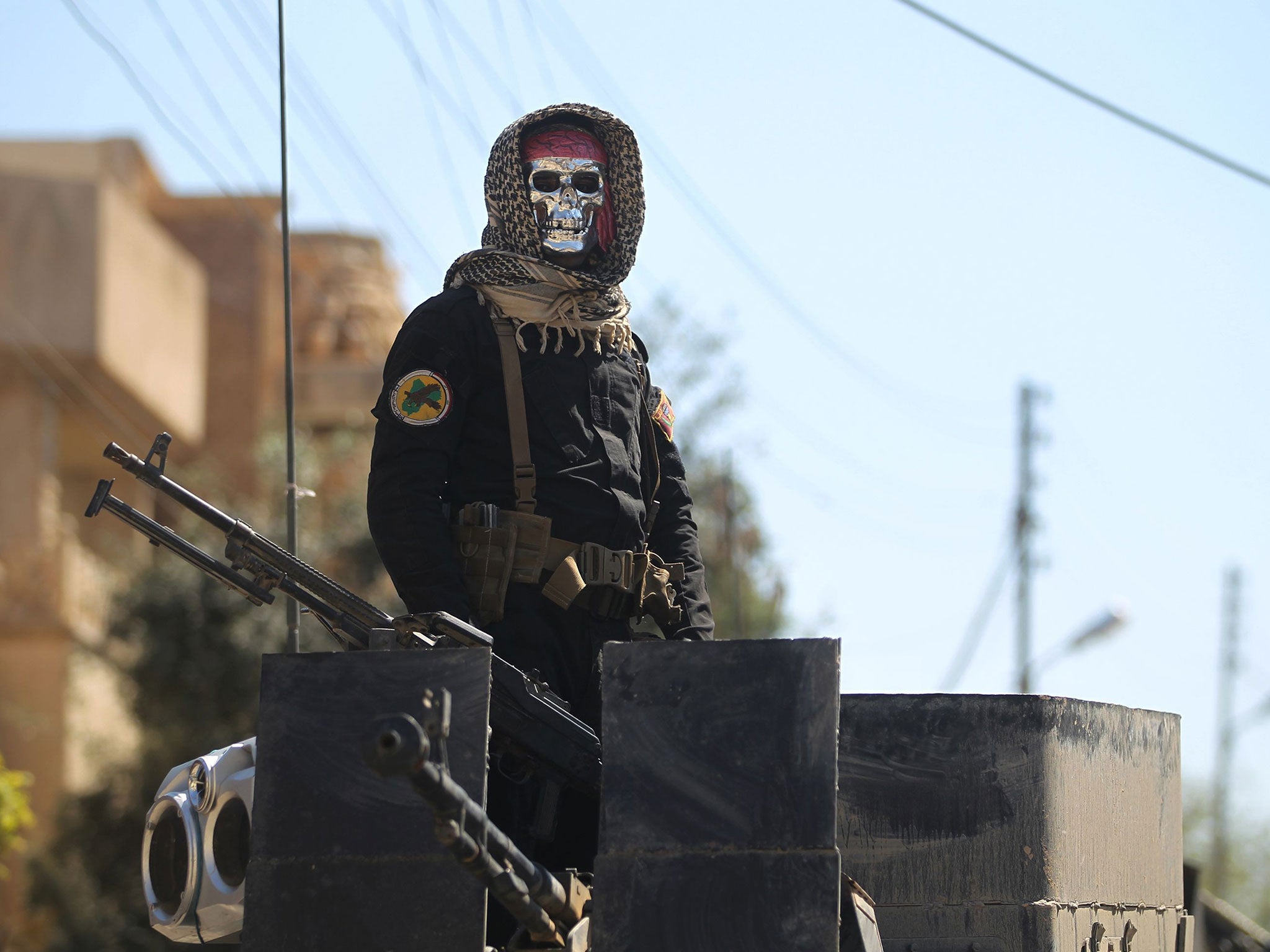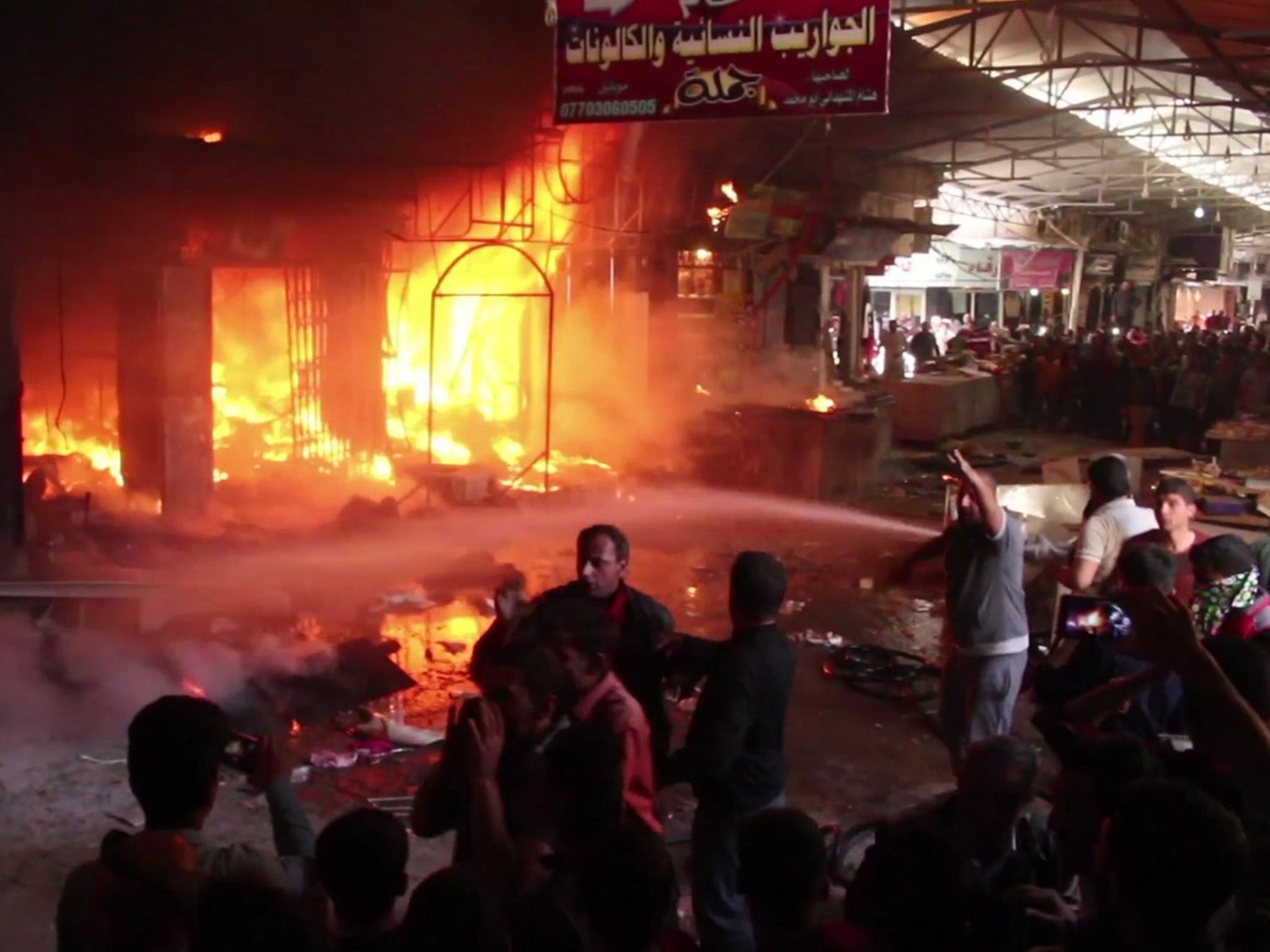Civilians in western Mosul are being shot at by Isis and Iraqi forces alike
Endgames: inside Iraq In the first of a series of dispatches, Patrick Cockburn enters war-torn Mosul and gets a rare insight into what life is like in the Isis-held western part of the city

Your support helps us to tell the story
From reproductive rights to climate change to Big Tech, The Independent is on the ground when the story is developing. Whether it's investigating the financials of Elon Musk's pro-Trump PAC or producing our latest documentary, 'The A Word', which shines a light on the American women fighting for reproductive rights, we know how important it is to parse out the facts from the messaging.
At such a critical moment in US history, we need reporters on the ground. Your donation allows us to keep sending journalists to speak to both sides of the story.
The Independent is trusted by Americans across the entire political spectrum. And unlike many other quality news outlets, we choose not to lock Americans out of our reporting and analysis with paywalls. We believe quality journalism should be available to everyone, paid for by those who can afford it.
Your support makes all the difference.Civilians trying to flee the besieged Isis-held enclave in west Mosul are being shot dead by Isis and Iraqi army snipers as they try to cross the Tigris River, says an eyewitness trapped inside the city with his family.
In an exclusive interview with The Independent, Jasim, a 33-year old Iraqi Sunni living in west Mosul near the 5th Bridge, said: “I want to rescue my mother and take her to the eastern part, but it is dangerous. Three people were killed in our neighbourhood trying to cross the river to the eastern side. They were shot dead by the snipers.”
Jasim explained that “Daesh (Isis) have snipers who cover the river bank between the 5th and 6th bridges".
"The problem is that even at night things are not that easy," he said. "The Iraqi army, the federal police and counter-terror forces shoot anyone coming from the western side as there is curfew at night and they believe anyone coming from the western side must be a Daesh fighter.” As a result, civilians are being killed by both Iraqi army mortars and Isis snipers when they try to escape. On several occasion in the past, the Iraqi security forces have announced that they have killed Isis infiltrators seeking to cross the Tigris from the west and these may have been civilians trying to escape.
Speaking about civilian casualties inside his neighbourhood, Jasim says that “dozens of civilians are killed every day, including children. Yesterday, two children were killed by a mortar shell of the Iraqi Army coming from the eastern part.” He says that Iraqi government media claims that they have "smart artillery" is quite untrue. This is confirmed privately by senior Iraqi officers, one saying that many of the civilian casualties are not being caused by air strikes, but by “Tuz” Russian-made rockets mounted on the back of vehicles, which have no guidance systems.
In a grim demonstration of the danger from air attack facing anybody living in west Mosul, Jasim was himself injured in a drone attack hours after he spoke to The Independent. He has been removed to hospital but the extent of his injuries are not known.
Jasim gives one of the few accounts from inside the closely besieged western part of Mosul still held by Isis, describing the increasingly desperate living conditions of at least 300,000 people trying to survive there. The interview was conducted by mobile phone late at night from inside the west part of Mosul, though Isis has in the past shot or hanged people using mobiles whom it suspects of spying on them. Though the signal was weak, messages can be passed to east Mosul, captured by government forces after three months of heavy fighting that finished in January.
Referring to the growing shortage of food, Jasim says that “people in our neighbourhood are searching in the garbage to find something that can be eaten to take it to their children.” There have been no vegetables or fruit available for over a month. He and his family have a little flour and rice stored, but they want to keep it as a last resort to feed their children. He says they roam other neighbourhoods to see if they can find food there so as not to use up these last reserves before they have to.
Where food is available, it is often too expensive for most people to buy. Jasim says that “where bakeries work, many women beg and ask those who have money to buy some bread for their children. Most of my neighbours eat bread only; they live on bread and water.” Even water can be difficult to obtain because the only source is neighbourhood wells from which it is pumped. But those who get water here need to provide petrol, which costs the Iraqi dinar equivalent of $15 a litre, to run the pump.
Surprisingly, there is a limited supply of electricity, though not in all areas according to Jasim. He says that “we have electricity for about two hours every three days, though in some areas they haven’t had electricity since last month. People move during the day into other neighbourhoods to charge their phones.” The mobile network is available only at night time because it is then that there is electricity in the eastern government-held part Mosul where there are mobile phone towers mounted on trucks.
The Isis-held enclave in Mosul, centred on the impenetrable warren of street and alleys so narrow that two people cannot walk abreast, is being heavily bombarded and is very dangerous. But people are still dying even in districts in east Mosul where fighting is supposed to have ended. An example of this happened on Monday in the east of the city in Nabi Yunus covered market, which is full of tiny booths and small shops, and which was crowded with shoppers when it was hit by the first of three Isis mortar bombs at 10 am. It struck a shop selling perfumes, which burst into flames, killing eleven adults and a child who were caught by the blast or burned to death by the fire which followed. Two more mortar bombs fired by Isis from the other side of the Tigris fell in the same area over the next hour, killing another child and two adults.
A small crowd was looking at the blackened burned out little shops when we arrived as a soldier in a red cap and a policeman tried with limited success to disperse them. “Go home and don’t stand here because Daesh (Isis) might send a suicide bomber!” shouted the soldier angrily and some in the crowd looked worried, recalling that this is a favourite Isis tactic, and quickly walked away. The policemen said that many of the injured had been badly burned by the blazing perfume shop and were unlikely to survive.

The mortar attack on Nabi Yunus market is only one incident out of dozens that are killing people every day in Mosul. There are at least 300,000 people packed into houses in the Old City of Mosul, which is still held by Isis and where it is impossible to distinguish fighters from civilians since they occupy the same houses which are often ancient and of flimsy construction. “Some of these houses are so old that they would fall if you raised your voice,” says Yohanna Towaya, a Christian leader who owns a house in the city.
Controversy continues to rage over the death of as many as 240 civilians, many hiding in cellars, killed during an air strike by the US-led air coalition on the Jadida district on 17 March which reduced three buildings to heaps of rubble. The coalition says it did carry out air strikes called in by Iraqi ground forces on this area at that time, but the Iraqi Defence Ministry claims that only 61 civilians were killed and these died because Isis had booby trapped the walls of the buildings in which they had taken shelter. Since Saturday it has banned journalists from entering those parts of west Mosul that it holds, making it difficult to verify how many bodies have been taken from the rubble. The online news letter Shaafaq News, which first broke the story of the Jadida air strike, says that it has been told by a security source that the true figure for casualties in west Mosul since the start of the offensive is 3,864 dead and 22,759 injured.
The best place from which to see what is happening in west Mosul is from the hill-top site once occupied by the Nabi Yunus shrine in east Mosul that was blown up by Isis as heretical in 2014. From there one can see the city on the western side of Tigris spread out like a map and, at first glance, the signs of war are not obvious aside from four plumes of smoke rising in the distance. Then there was the crash of Iraqi artillery firing nearby and, a few seconds later, another cloud of smoke rose in the distance. At one point, two helicopters passed over Isis-held territory and there was the sound of heavy machine gun or cannon fire.
There are not many soldiers or police in east Mosul, most of the elite units that captured it having moved on to take part in the fighting on the far side of the Tigris. Traffic is heavy, many shops are open and occasionally one can see workers with heavy construction equipment filling craters or replacing sewage pipes that have been severed by bombs or shells. Even small bridges were destroyed by air strikes and there are frequent craters at cross roads.
Ahmed, an architect who made a living in Mosul during the two-and-a-half year occupation by Isis by illegally selling cigarettes - for which he was repeatedly lashed - says that the main problem is the lack of electricity and fresh water aside from that pumped from wells. There are plenty of fruit and vegetables for sale on street stalls, but they are imported from Turkey and are expensive. Salaries for government employees, much the biggest source of employment all over Iraq, are only starting to be paid. Ahmed said that the behaviour of the Iraqi army at checkpoints “is 90 per cent better than it was before Daesh captured the city in 2014, but the failure of the Iraqi government to provide services or salaries for people is making them unpopular.”
Ahmed fears that west Mosul will be totally destroyed, saying that “seven of my friends living in that part of the city have been killed this month alone – one by a Daesh sniper as he tried to escape and the six others by air strikes.” It may be that the siege of west Mosul still has a long way to go. Hoshyar Zebari, the former Iraqi Foreign and Finance Minister, says “west Mosul is not yet completely surrounded and Daesh are still sending in reinforcements, mostly from Central Asia”. Citing an Iraqi general with whom he had just been talking, he said that there had been no relaxation of the rules of the engagement for the conduct of US-led air strikes since Donald Trump became President, something confirmed by other sources. The bad news for Mosul is that the siege of any city, defended by well-trained fanatics who will not surrender and are intermingled with a large population, makes it tragically inevitable that the civilians will suffer heavy loss of life.
Join our commenting forum
Join thought-provoking conversations, follow other Independent readers and see their replies
Comments